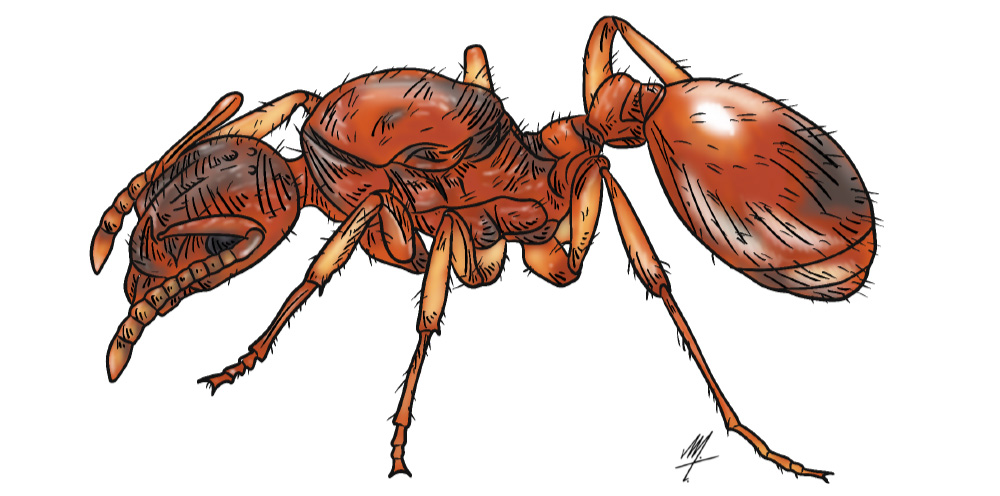Exploring the Fiery World of European Fire Ants
Imagine an ant with a sting that feels like a tiny fire – that’s the European Fire Ant! These ants are not only interesting because of their sting; they have a unique way of living and are important in their ecosystemsAn ecosystem is a community of living organisms, like insects and birds, and non-living components, like water and rocks, that interact with each other in a specific area. Learn More. Grab your magnifying glass, and let’s zoom in on the life of the European Fire Ant, learning about their habits, homes, and roles in the environment.
Getting to Know the European Fire Ant
The European Fire Ant, scientifically named Myrmica rubra, is medium-sized for an ant, about 4 to 6 mm in length. They are a reddish-brown color, which helps them blend into the soil and leaves in their habitat. But what really stands out is their ability to sting, which they use to defend their colony and catch food.
Where Fire Ants Call Home
European Fire Ants like to live in moist environments, often near water sources like rivers or ponds. They build their nests in the soil, creating mounds that can be quite large. They’re also known to invade our gardens and lawns, sometimes even making their way into homes.
A Busy Colony Life
In a European Fire Ant colony, there’s a lot of activity! The queen lays eggs, and the worker ants – who are all females – do everything else, like gathering food, looking after the young, and protecting their home. These ants are super protective of their colony and aren’t afraid to use their sting if they feel threatened.
Feisty Eaters
European Fire Ants eat a variety of foods. They love sweet things like honeydew and nectar, but they’re also fierce hunters, preying on other insects. Their diet helps control the populations of pests, which is good for gardens and forests.
Helping and Hurting Nature
While they help control pests, European Fire Ants can also be a bit of a problem in new environments. They compete with native ants and other insects, sometimes upsetting the balance in their ecosystems. But they also play a role in seed dispersal and soil aeration.
Nature’s Little Warriors
These ants have to defend themselves against predators like birds and larger insects. They’re also known to have turf wars with other ant colonies, fighting bravely to protect their home.
Expanding the Fire Ant Family
Every year, new queens and males with wings leave their home colony to start new families. This is how European Fire Ants spread and grow their colonies, ensuring their fiery presence in the environment.
Surviving with a Sting
Their sting is not just for defense; it’s also a tool for survival. European Fire Ants use their sting to catch food and communicate danger to other ants in their colony. They’re also adaptable to different environments, which helps them thrive in various places.
Challenges for Fiery Ants
Despite their tough nature, European Fire Ants face challenges like habitat changes and competition with other species. But their adaptability and strong colony structure help them overcome these obstacles and maintain their role in nature.
The European Fire Ant is a fascinating creature with a big impact. Their sting, while a bit scary, is an amazing adaptationAn animal adaptation is a physical feature or a specific behavior that allows it to better survive in its environment. Learn More for defense and hunting. They play important roles in controlling pests and enriching the soil but can also challenge native species.




